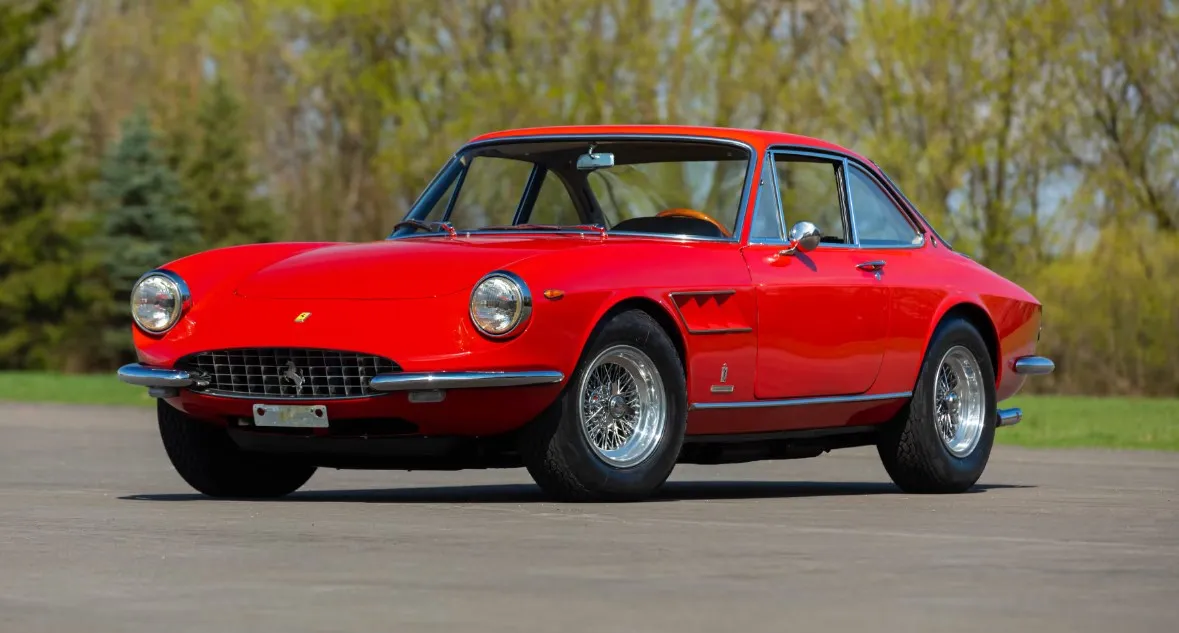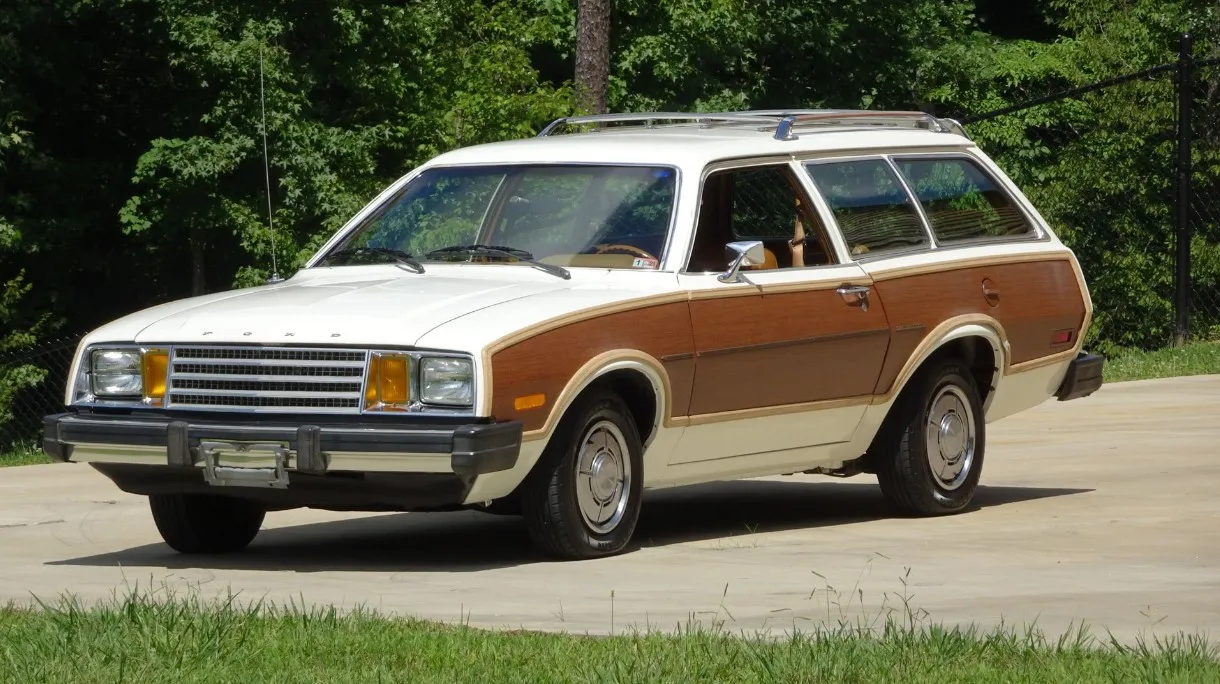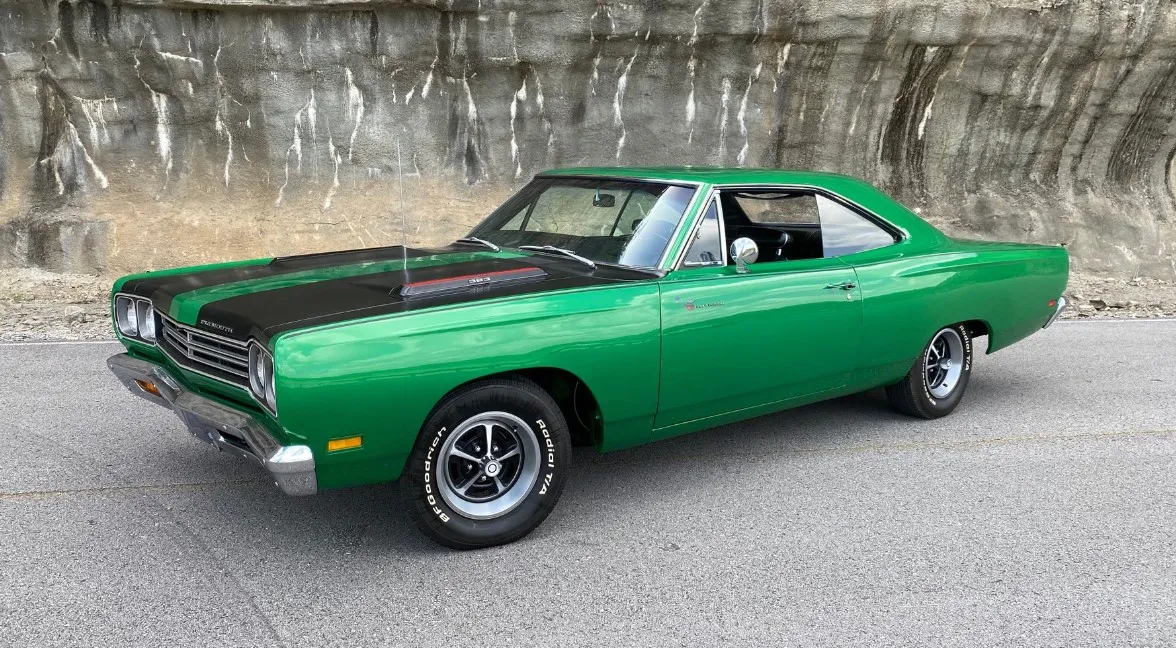The 1957 Studebaker Golden Hawk is a quintessential example of American automotive innovation during the 1950s, a time when the car industry was booming, and manufacturers were pushing the boundaries of design and performance. As a classic car, the Golden Hawk stands out not only for its distinctive looks but also for its engineering prowess. For those with a passion for vintage vehicles, the 1957 Studebaker Golden Hawk represents the pinnacle of mid-century American car design.
The Birth of the Studebaker Golden Hawk

The Golden Hawk was part of Studebaker’s Hawk series, which was introduced in 1956 as a response to the growing demand for high-performance personal luxury cars. Studebaker, known for its innovation and independent spirit, sought to create a car that could compete with the more prominent names in the industry like Ford, Chevrolet, and Chrysler. The Hawk series, particularly the Golden Hawk, was their answer.
The 1957 Studebaker Golden Hawk was a direct evolution of the 1956 model, which itself had made waves for its combination of luxury and muscle car attributes. The 1957 version took these qualities to the next level, embodying the era’s fascination with power, style, and technological advancement.
Design: A Blend of Elegance and Muscle

The design of the 1957 Studebaker Golden Hawk is one of the aspects that make it a true classic car. The car’s body was designed by Raymond Loewy, a name synonymous with mid-century modern design. Loewy’s influence on the Golden Hawk can be seen in its sleek, aerodynamic lines, which give the car a sense of motion even when it’s standing still.
The Golden Hawk’s front end is particularly striking, with its low, wide grille flanked by dual headlights. The long, sculpted hood features a prominent air scoop, hinting at the powerful engine that lies beneath. Chrome accents run the length of the car, from the grille to the tailfins, adding a touch of luxury and highlighting the car’s elegant proportions.

The car’s roofline is another distinctive feature, with a hardtop design that flows seamlessly into the rear deck.
The tailfins, a hallmark of 1950s car design, are prominent but not overdone, giving the Golden Hawk a balanced and refined appearance. The rear end is finished with stylish round tail lights and a chrome bumper that adds to the car’s polished look.

The interior of the Golden Hawk is equally impressive, with a focus on driver and passenger comfort. The dashboard is clean and functional, featuring a full set of gauges housed in a chrome-trimmed panel.
The seats are upholstered in high-quality materials, providing both comfort and durability. The overall interior design reflects the car’s dual nature as both a performance machine and a luxury vehicle.
Performance: Power Under the Hood

While the design of the 1957 Studebaker Golden Hawk is certainly eye-catching, it’s what’s under the hood that truly sets this car apart. At a time when muscle cars were beginning to gain popularity, the Golden Hawk was one of the few luxury cars that could hold its own in terms of performance.
The 1957 Golden Hawk was equipped with a 289 cubic inch (4.7-liter) V8 engine, which was supercharged to produce an impressive 275 horsepower.
This engine made the Golden Hawk one of the fastest cars of its time, with a top speed of around 125 miles per hour. The supercharger, a Paxton unit, was a significant upgrade that gave the car the power to compete with other high-performance vehicles of the era.

The car’s acceleration was equally impressive, with the ability to go from 0 to 60 miles per hour in just over 8 seconds. This level of performance was exceptional for a car that was also designed to provide a comfortable and luxurious ride.
The Golden Hawk’s suspension system was designed to handle the car’s power, with a front independent suspension and a solid rear axle.
This setup provided a balance between a smooth ride and responsive handling, making the car a pleasure to drive on both highways and winding roads. The car was also equipped with power steering and power brakes, both of which were advanced features for the time.
Innovation and Engineering

The 1957 Studebaker Golden Hawk was not just a powerful and stylish car; it was also a showcase of Studebaker’s engineering capabilities.
The car was one of the first to feature a fiberglass hood, which was lighter and stronger than traditional steel hoods. This innovation helped to reduce the car’s overall weight, improving both performance and fuel efficiency.
Another engineering highlight of the Golden Hawk was its use of a supercharger, which was still a relatively new technology in the automotive industry.
The supercharger allowed the car to achieve higher levels of performance without the need for a larger, heavier engine. This was particularly important for Studebaker, as it allowed them to compete with the larger V8 engines being used by other manufacturers.

The car’s transmission options also reflected its advanced engineering. The Golden Hawk could be equipped with either a three-speed manual transmission or a three-speed automatic transmission, known as the Flight-O-Matic.
The automatic transmission was particularly popular, as it provided smooth and effortless shifts, making the car easier to drive in a variety of conditions.
Legacy and Collectibility

Today, the 1957 Studebaker Golden Hawk is considered one of the most desirable classic cars from the 1950s. Its combination of striking design, powerful performance, and innovative engineering make it a favorite among collectors and enthusiasts.
One of the reasons for the Golden Hawk’s enduring appeal is its rarity. Studebaker was a smaller manufacturer compared to the Big Three (Ford, General Motors, and Chrysler), and as a result, fewer Golden Hawks were produced. This rarity, combined with the car’s performance and design, makes it a valuable addition to any classic car collection.

The Golden Hawk is also a car that has aged well, with its design still looking modern and stylish more than 60 years after it was first introduced.
The car’s performance remains impressive by today’s standards, and its supercharged V8 engine continues to be a point of pride for those who own and drive these vehicles.
For collectors, finding a well-preserved or fully restored 1957 Golden Hawk can be a challenge, but it’s one that is well worth the effort. These cars are highly sought after at auctions and can command high prices, particularly if they are in original condition or have been carefully restored to factory specifications.
The 1957 Studebaker Golden Hawk - A True Classic Car

The 1957 Studebaker Golden Hawk is more than just a classic car; it’s a symbol of an era when American automakers were willing to take risks and push the boundaries of design and engineering.
The Golden Hawk’s combination of luxury and performance, along with its innovative use of technology, make it a standout vehicle in the history of the American automobile.
For those who appreciate the artistry and craftsmanship of classic cars, the 1957 Studebaker Golden Hawk is a vehicle that deserves to be celebrated.
Whether you’re a collector, an enthusiast, or simply someone who loves the look and feel of a well-designed car, the Golden Hawk is a testament to the enduring appeal of mid-century American automotive design.



